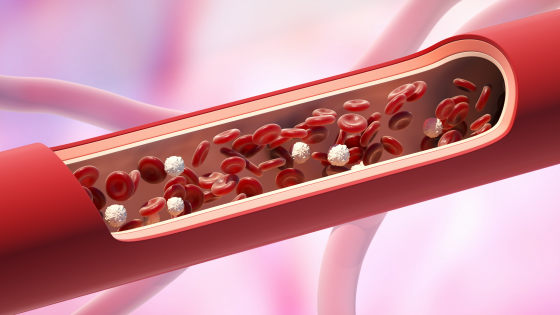The new corona changes red blood cells and white blood cells

Coronavirus infection (COVID-19) has been reported to persist for several months. Researchers observed red blood cells and white blood cells to elucidate the mechanism of why the symptoms were prolonged, and found that the blood cells of COVID-19-infected individuals were severely damaged and the damage did not recover for the next 7 months. Turned out.
How a COVID-19 infectxion changes blood cells in the long run
Physical phenotype of blood cells is altered in COVID-19
(PDF file) https://www.cell.com/biophysj/pdf/S0006-3495 (21) 00454-9.pdf
It has been confirmed that COVID-19 may have long-lasting symptoms such as dyspnea, malaise, headache, arthralgia, and chest pain after being infected with the virus. As a result of the investigation, 87% of the total people continue to experience some kind of symptom even 60 days after the onset, and such a case is called 'Long covid'.
What is 'Long covid' where the symptoms of COVID-19 continue for more than a few weeks? --GIGAZINE

The cause and mechanism of long covid are not yet clear, but patients with COVID-19 have been found to have impaired blood circulation and associated oxygen transport. Since red blood cells play a major role in blood circulation and oxygen transport, a research team at the Maxplank Institute for Optical Science in Germany conducted a survey by measuring the status of red blood cells and white blood cells in COVID-19 patients. I did.
For this analysis, 'Real-time deformability cytometry (RT-DC) ' developed by Max Planck Institute for Optical Science in 2015 was used. RT-DC is a method of taking pictures of red blood cells and white blood cells in a stretched state through an electron microscope and determining the cell type by software, and it is evaluated for its speed and simplicity of being able to analyze 1000 blood cells per second. ..
The research team collected as many as 4 million blood cells from 17 acute cases of COVID-19, 14 who recovered from COVID-19, and 24 healthy, uninfected people. Analysis revealed that the size of blood cells in people with COVID-19 was significantly different from that in healthy people. This means that the cells of COVID-19 patients have been damaged, explaining that COVID-19 patients are more likely to have vascular occlusions and pulmonary embolisms.

These damages also interfere with the task of red blood cell oxygen transport. In addition, COVID-19 patients were found to have 'significantly softened' lymphocytes, a type of white blood cell. Lymphocytes usually soften when a strong immune response occurs. The researchers have confirmed a similar condition in other white blood cells, such as neutrophils, and states that blood cell changes continued until seven months after the acute infection.
The researchers suggest that acute infections can cause long-term symptoms called long covids, as large changes occur in the 'skeleton' of immune cells.
Related Posts:
in Science, Posted by darkhorse_log







